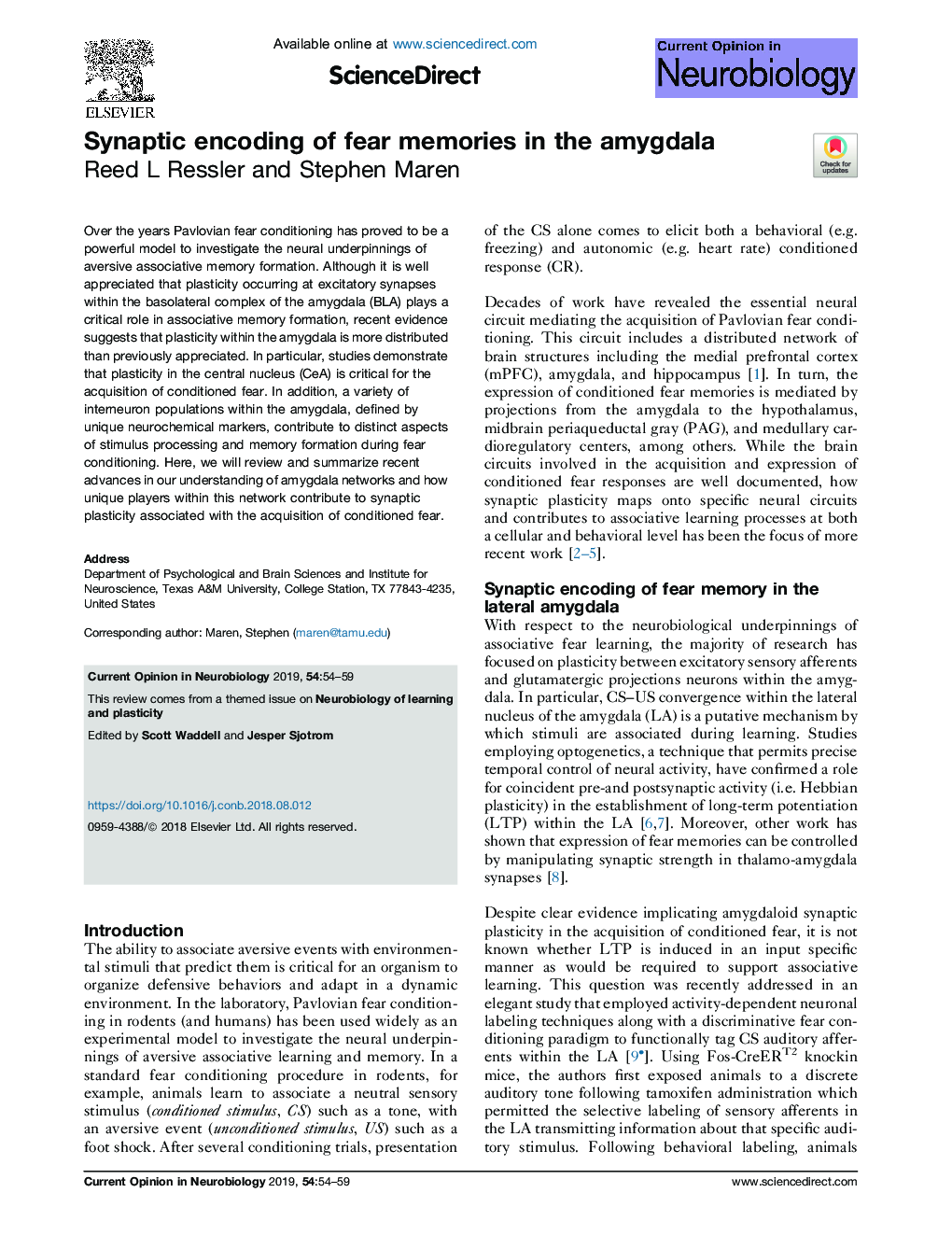| Article ID | Journal | Published Year | Pages | File Type |
|---|---|---|---|---|
| 10106923 | Current Opinion in Neurobiology | 2019 | 6 Pages |
Abstract
Over the years Pavlovian fear conditioning has proved to be a powerful model to investigate the neural underpinnings of aversive associative memory formation. Although it is well appreciated that plasticity occurring at excitatory synapses within the basolateral complex of the amygdala (BLA) plays a critical role in associative memory formation, recent evidence suggests that plasticity within the amygdala is more distributed than previously appreciated. In particular, studies demonstrate that plasticity in the central nucleus (CeA) is critical for the acquisition of conditioned fear. In addition, a variety of interneuron populations within the amygdala, defined by unique neurochemical markers, contribute to distinct aspects of stimulus processing and memory formation during fear conditioning. Here, we will review and summarize recent advances in our understanding of amygdala networks and how unique players within this network contribute to synaptic plasticity associated with the acquisition of conditioned fear.
Related Topics
Life Sciences
Neuroscience
Neuroscience (General)
Authors
Reed L Ressler, Stephen Maren,
